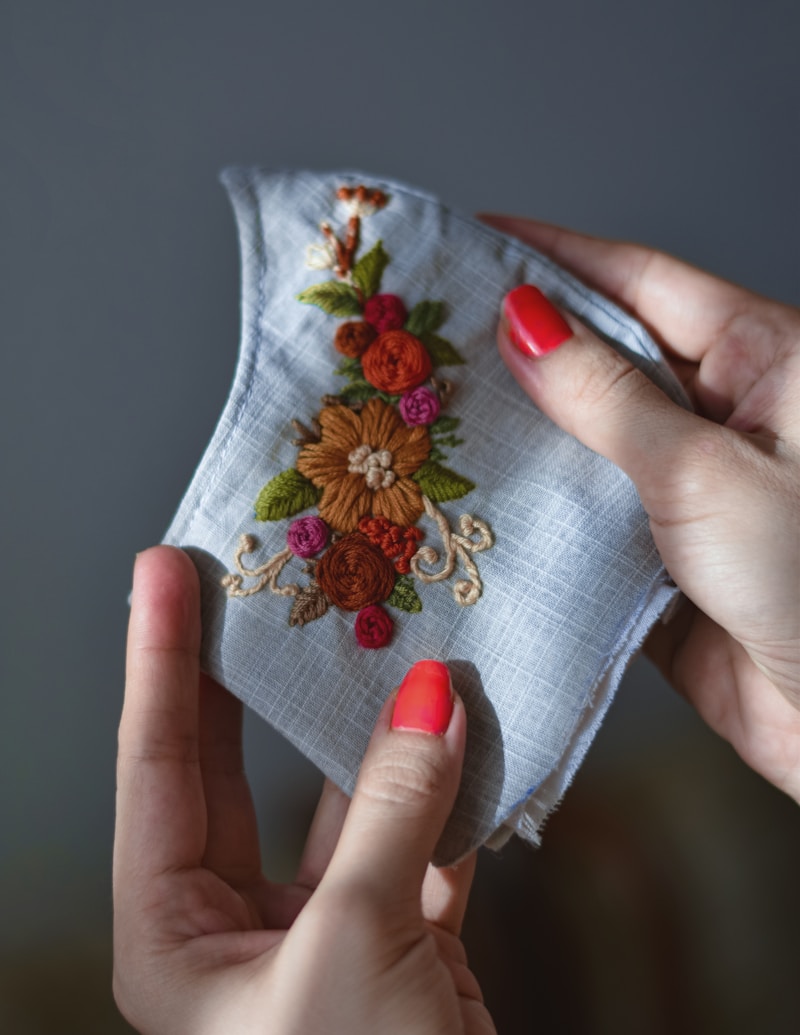Exploring the Beauty of Embroidered Elements Drawn from the Wilderness
Exploring the Beauty of Embroidered Elements Drawn from the Wilderness
Embroidered elements drawn from the wilderness exhibit a unique blend of nature's aesthetics and artistic expression. These intricate designs not only reflect the diverse beauty found in natural environments but also connect us to the serene landscapes that inspire them. In this article, we will delve into the significance of these embroidered elements, their symbolism, various styles, and tips for creating your own pieces.
The Significance of Embroidered Elements
Embroidery has a long-standing history, often serving as a means of storytelling and cultural expression. When we focus on elements drawn from the wilderness, we emphasize the importance of nature in art. Each embroidered piece can symbolize various aspects of the natural world, from flora to fauna. For instance, a design featuring a majestic elk could represent strength and resilience, while delicate wildflowers might signify beauty and fragility.
Connection to Nature
Incorporating natural elements into embroidery allows artisans to forge a connection with the environment. This connection is particularly vital in our fast-paced, technology-driven lives, as it reminds us of the calming presence of nature. The choice of materials, colors, and themes often reflects the unique landscapes and ecosystems that inspire the piece.
| Natural Elements in Embroidery | Symbolism |
| Mountains | Strength and endurance |
| Rivers | Flow of life and adaptability |
| Trees | Growth, stability, and longevity |
| Wildflowers | Beauty, freedom, and spontaneity |
| Animals | Characteristics of the animal depicted (e.g., wisdom, loyalty) |
Popular Styles of Wilderness-Inspired Embroidery
Various embroidery styles can be employed to showcase wilderness elements. Here are some popular techniques:
1. Hand Embroidery
Hand embroidery remains a cherished art form, allowing for intricate detailing and personal touches. With a needle and thread, artisans can create stunning landscapes and wildlife scenes, making each piece unique. This technique also allows for greater experimentations with stitches, as one can combine different patterns to mimic the textures found in nature.

2. Machine Embroidery
Advancements in technology have made machine embroidery an accessible avenue for many. This technique utilizes specialized machines to create designs quickly and with high precision. Although machine embroidery may lack the personal touch of hand stitching, it allows for the mass production of intricate patterns featuring wilderness themes.
3. Appliqué
Appliqué is a technique that involves sewing a piece of fabric onto a larger one, creating a layered effect. This style lends itself well to depicting animals and plants from the wilderness, allowing the use of various fabric types and colors to enhance the overall design.
Choosing the Right Materials
When creating embroidered elements drawn from the wilderness, selecting the right materials is crucial. Here are a few recommendations:
1. Fabric
Natural fabrics, such as cotton, linen, or silk, are ideal for embroidery. They provide a smooth surface for stitching and allow for a clean, polished finish. Additionally, they tend to take dye well, further enhancing the vibrancy of wilderness-inspired colors.
2. Threads
Opt for high-quality embroidery threads that come in a wide range of colors. Cotton and silk threads are popular options due to their durability and sheen. Variegated threads can also add depth to your work, mimicking the multicolored hues of natural scenes.
Tips for Creating Your Own Embroidered Elements
If you are inspired to create your own embroidered elements drawn from the wilderness, consider the following tips:
1. Research and Gather Inspiration
Take time to explore the wilderness, whether through hikes in the mountains, walks by the river, or visits to local parks. Capture photographs or sketches that inspire you. Study different plants, animals, and landscapes to understand their forms and colors better.
2. Plan Your Design
Before starting your embroidery project, sketch out your design. Consider the layout and the elements you wish to include. This planning phase is essential for ensuring a balanced composition and helps visualize how the elements will interact on the fabric.
3. Experiment with Stitches
Incorporate a variety of stitches to create texture and depth in your piece. Techniques like satin stitch, chain stitch, and French knots can add dimension and interest, mimicking the intricate details found in nature.
4. Color Palette
Select a color palette that reflects the landscape you wish to recreate. Nature is filled with an array of hues, so don't hesitate to mix and match to achieve the desired effect. Create swatches to test colors before committing them to your final piece.
Maintaining Your Embroidered Pieces
Once your project is complete, it's essential to take care of your embroidered elements to ensure they last over time:
1. Wash Carefully
Hand wash or use the delicate cycle on your washing machine to clean your embroidered items. Avoid harsh detergents, as they can damage the threads and fabric.
2. Storage
Store your embroidered pieces in a cool, dry place away from direct sunlight to prevent fading. Use acid-free tissue paper to preserve their shape and protect them from dust.
Conclusion
Embroidered elements drawn from the wilderness provide a unique way to celebrate the beauty of nature while showcasing artistic talent. By understanding the significance, styles, and techniques associated with this art form, you can create stunning pieces that resonate with both your aesthetic and the natural world. Whether for personal enjoyment or as gifts for loved ones, these creations can evoke the tranquility and inspiration found in the wilderness.
In summary, remember to research inspiration, plan carefully, and choose the right materials for your embroidered pieces. Don't hesitate to explore the endless possibilities within this art form and let nature guide your creativity!
